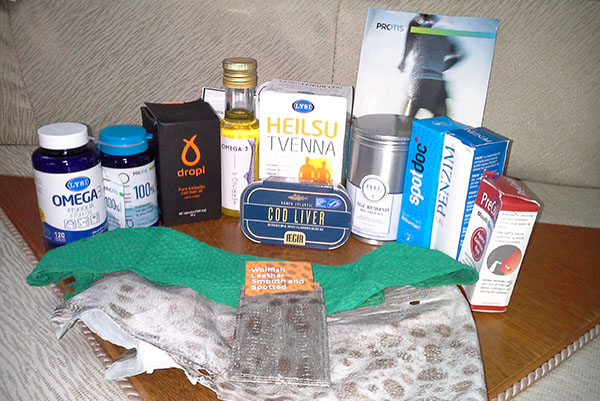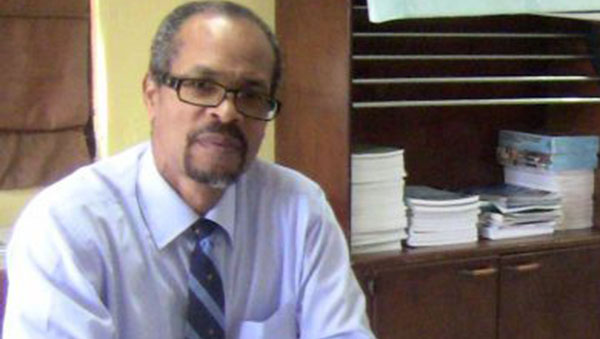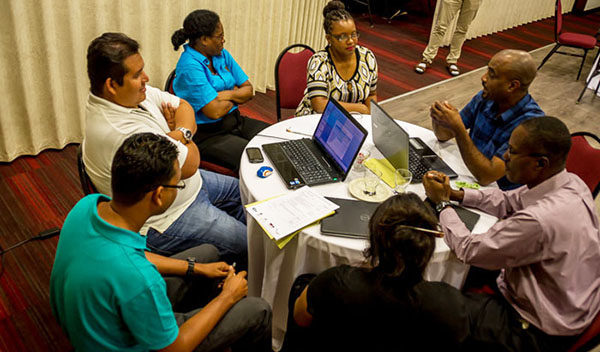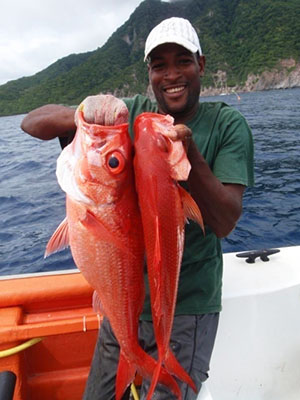BELMOPAN, Belize, August 16, (CMC) – The Belize-based Caribbean Regional Fisheries Mechanism (CRFM) says at a time when countries across the region are faced with economic challenges, innovation in one of its prime sectors—the fisheries and aquaculture sector—can spur the kind of growth needed to help buttress the regional economy.
However, it says this kind of change won’t come overnight and it is working with member states from around the region, as they prepare to take the first steps in converting fish waste to fish wealth, a change which could multiply earnings from the sector.
“Going forward, we need to make the point that proper utilization of fishery resources is not about increasing production or increasing catches, it is more about maximizing value of what we are now taking and realizing the significant benefits that is possible by focusing on value addition,” said CRFM Executive Director, Milton Haughton.
Late last month, fisheries officials and private sector representatives from 17 CRFM member states met in Suriname for a weeklong workshop, where they discussed the application of the value chain approach to the fisheries and aquaculture sector.
“The objective was really to introduce participants to the value chain approach in fisheries, and we did this in collaboration with development partners from Iceland and the Faculty of Food and Agriculture at the University of the West Indies (UWI),” Haughton said.
“Iceland has made tremendous advances in value addition in fishers and they are perhaps the world’s leaders,” Haughton said, noting that this success did not happen overnight, it arose out of a period of crisis, when the country was experiencing a decline in its fisheries after the 1960s.
However, Haughton said, they were able to turn things around, largely by applying the value chain approach to make better use of their resources, such as improving quality, making beauty products from fish guts and adopting a market-driven approach to fisheries. The Icelandic economy with a per capita gross domestic product (GDP) of about US$45,000, is driven largely by the fisheries sector.
“They are no longer going out to catch as much fish as they can, but they are trying to optimize the value, and satisfy the requirements of their markets” Haughton explained.
CRFM says it believes in applying the value chain approach that begins with the simple things, starting with preparatory activities before the fishers go to sea, and then extending to harvesting, handling, processing, marketing and distribution.
“We can catch fish in such a way that we maximize value, just by targeting ‘when, where, what size, etc.’ we catch, based on market demand. Just by doing that, you can improve value… In some cases, it’s just about maintaining the freshness and quality by improving the handling of the product,” said the CRFM Executive Director.
Whereas Caribbean countries have plenty of fisheries resources, they also import a great deal, including items such as smoked salmon for the tourism industry. Countries, like Suriname, are exploring ways in which they can create viable local products to substitute for those imports.
The fisheries experts, who travelled to Suriname, saw this first hand, as they were offered smoked “bang-bang” (snapper)—a new local delicacy served right alongside the imported product.
Haughton explained why understanding the market demand is key for producers hoping to corner the market to maximize local gains.
“Think more about the consumer. What is it that the consumer really wants? What is it that the consumer will pay more money for? There would be a major change, overall, in the way fishers and processors conduct their operations if they were to focus more on the consumers.
“The modern consumer, the housewives, are looking for specific products… They are looking for good nutrition, freshness, and easy-to-prepare meals. These are things that fishers and processers will need to be thinking about. And those who have thought through it, and who have structured their operations along these lines, are making great gains,” Haughton added.
He said that in the Caribbean region, fishers and fish processing facilities start with the catch.
“Their starting point is to go and catch as much as they can and, when the product is landed, they try to figure out how to sell it, but the value chain approach looks from the other end. It starts with the question: What is the market that I want to serve? Where is the best market? What form of product the market is demanding? Then you work back from the market to determine what fish you should target and you structure all of your activities to satisfy that market,” Haughton recommended.
CRFM notes that some types of non-selective fishing results in a lot of waste in the fishing industry. Many operations, such as shrimping in the southern Caribbean, will harvest large quantities of non-target species.
Haughton said that a lot of the non-target species or by-catch is discarded, since it is deemed to have low market value. However, using science, technology and good marketing these can be converted into useful products.

The products pictured above, made from fish components, include health supplements, beauty products, and leather. Photo credit: CFRM.
“I was in El Salvador recently and I was surprised to see that they were making cookies and meals for children from flour [derived] from fish that would normally be discarded,” Haughton said, indicating that in other places, fish guts are used to make cosmetics and pharmaceuticals—very high end products—and increasingly, companies are using fish enzymes to make creams and lotions.
Haughton said that the Caribbean countries need to do much to promote the value chain approach in fisheries and aquaculture.
The CRFM intends to provide the institutional support, capacity building and awareness raising that is needed. In the months ahead, the CRFM will lead the development of more case studies to document success stories from which the region can learn. These reports would be made available to consumers as well as private sector stakeholders, who will be key in driving the process forward.
“They – the private sector — have to be key stakeholders and partners, and they have to be convinced that it makes sense.
“There needs to be a free flow of information from consumers to harvesters, right through the chain, so people know what is happening and they can make good decisions. The need for free flow information is an important part of the transition towards the value chain approach in the region,” he added.
Haughton urges development partners in the fisheries sector, as well as training and research institutions, fish processing facilities and government ministries responsible for fisheries and trade, to work together to understand the challenges, remove the constraints and impediments, and provide incentives for development of the value chain in the fisheries sector in the region.
“We have a long way to go, but we have identified some potential fisheries and potential resources where we could begin to apply this approach,” Haughton said.
 Pride News Canada's Leader In African Canadian & Caribbean News, Views & Lifestyle
Pride News Canada's Leader In African Canadian & Caribbean News, Views & Lifestyle







